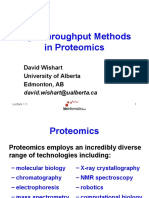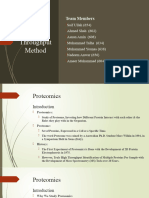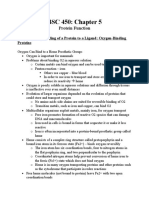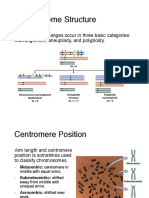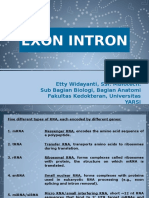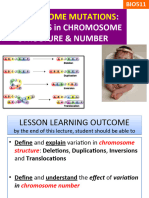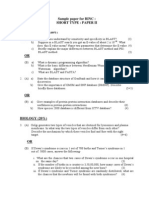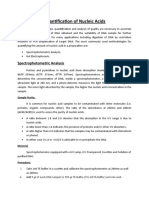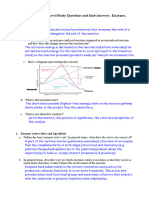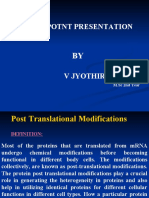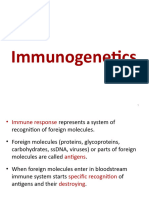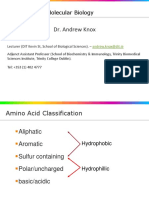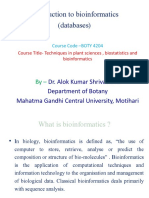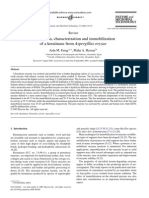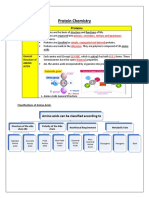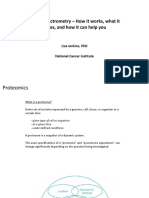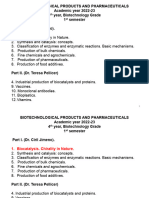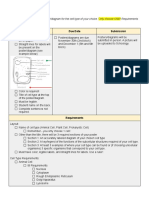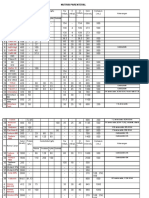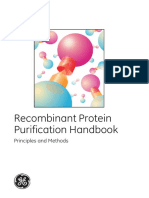0% found this document useful (0 votes)
105 views60 pagesProtein Identification Techniques
Protein identification techniques involve:
1. Separating proteins from complex samples using techniques like SDS-PAGE or chromatography.
2. Digesting proteins into peptides using proteases like trypsin.
3. Analyzing peptide masses using mass spectrometry to generate fingerprints.
4. Tandem mass spectrometry is used to fragment peptides for sequencing.
5. Sequence tags are searched against protein databases to identify proteins.
Uploaded by
NasrullahCopyright
© © All Rights Reserved
We take content rights seriously. If you suspect this is your content, claim it here.
Available Formats
Download as PDF, TXT or read online on Scribd
0% found this document useful (0 votes)
105 views60 pagesProtein Identification Techniques
Protein identification techniques involve:
1. Separating proteins from complex samples using techniques like SDS-PAGE or chromatography.
2. Digesting proteins into peptides using proteases like trypsin.
3. Analyzing peptide masses using mass spectrometry to generate fingerprints.
4. Tandem mass spectrometry is used to fragment peptides for sequencing.
5. Sequence tags are searched against protein databases to identify proteins.
Uploaded by
NasrullahCopyright
© © All Rights Reserved
We take content rights seriously. If you suspect this is your content, claim it here.
Available Formats
Download as PDF, TXT or read online on Scribd
/ 60


